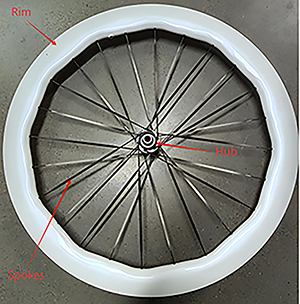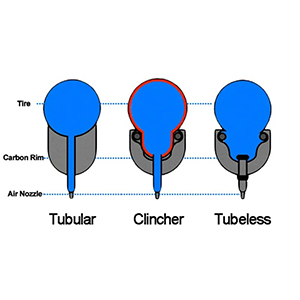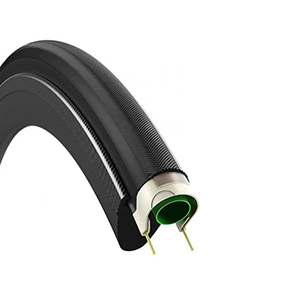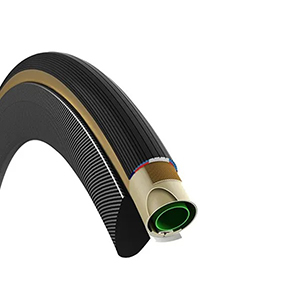
Different Types of Bike Wheels in 2025 A Complete Guide for Cyclists
As a cyclist, can you identify the material, size, rim depth, and specific hub type of a bicycle? You might not be familiar with some of these details, or perhaps you've never really thought about them. Choosing the right bicycle wheel can be overwhelming, particularly with the numerous options available on the market. Each wheel serves a specific purpose, whether it's speed, durability, or comfort. Road, gravel, and mountain bike wheels all have unique characteristics that affect a bike's handling and performance. In this guide, we'll introduce you to the main types of bicycle wheels, including their construction, materials, and how they affect performance.
How a Bicycle Wheel Works
A bicycle wheel may seem simple, but it's actually made up of a variety of components that work together to ensure a smooth and efficient ride. A carbon wheel consists of the carbon rim, carbon spokes, hub ,and tire. The hub is located in the center, allowing the wheel to rotate around its axis. The spokes connect the hub to the rim, evenly distributing your weight and maintaining the wheel's shape under pressure.
The rim supports the tire and helps transfer your pedaling force to the road. The tire provides traction, absorbs shock, and determines how well the bike grips different surfaces. The tension of the spokes keeps the wheel stable while you ride, while the hub bearings allow the wheel to rotate with minimal friction.

The Most Common Carbon Wheel Sizes for Cycling
After reading the previous section, you now understand how bicycle wheels work. Different sizes also affect a bicycle's performance and advantages, such as handling, acceleration, and ride feel on different surfaces. Carbon wheels come in a variety of diameters, and each size has its advantages depending on the type of riding you do. Understanding the most common carbon fiber wheel sizes can help you choose the right bike setup.
700c Carbon Wheels
This is the standard size for most carbon fiber road bikes wheels. They roll smoothly, are easy to maintain at high speeds, and are compatible with a wide range of tires. If you primarily ride on paved or flat roads, 700c wheels are generally the best choice.
Also known as 27.5-inch wheels, these carbon fiber wheels are commonly used on gravel and adventure bikes. They are slightly smaller than 700c wheels, making the bike more maneuverable on rough terrain. Wider tires can be used for better grip and comfort.
Types of Carbon Fiber Bike Wheels
Wheel size is more than just a number; it affects a bike's ride feel and performance. Different diameters influence speed, stability, and handling on various surfaces. Compared to traditional aluminum wheels, carbon fiber bicycle wheels are designed to offer lightweight performance, improved aerodynamics, and increased strength. They are favored by cyclists seeking speed, efficiency, and a smoother ride. In this section, we'll introduce the types of carbon fiber bicycle wheels. Read on.
Clincher, Tubular, and Tubeless: A Detailed Comparison

Clincher Tires: Easy to install and repair. They use a separate inner tube and fit most standard rims. They are ideal for everyday road riding.

Tubular Tires: Stitched around the inner tube and bonded to the rim. They are lighter and roll more efficiently, especially for racing.

Tubeless: No inner tube is required. They reduce the risk of flats and allow you to ride at lower tire pressures for greater comfort and grip.

Lightweight rims help increase climbing speed.
Deeper rim profiles reduce wind resistance on flats.
Compatible with narrow, high-pressure tires, they increase speed and efficiency.
These wheels are ideal for long road rides, races, or any cyclist looking to improve their overall speed.
Carbon Gravel Wheelsets
Gravel riding demands durability and comfort. Carbon gravel wheels are designed for mixed-surface riding.
Wider rims accommodate larger tires, absorbing bumps and improving stability.
The sturdy construction handles rough terrain without sacrificing performance.
They are ideal for gravel, dirt, and adventure riding.
Gravel cyclists benefit from the balance of lightweight performance and toughness.
Reinforced construction improves impact resistance.
Lightweight carbon fiber aids acceleration and climbing.
Suitable for trail riding, off-road riding, and enduro racing, these wheels offer a balance of control and speed.
By understanding the different types of carbon fiber bicycle wheels, you can choose a set that's right for your riding style, terrain, and performance goals. Choosing the right one ensures a more enjoyable and efficient ride.
Materials Used in Bike Wheels: Aluminum, Carbon, Steel, and Titanium
Material
Weight & Performance
Durability & Strength
Cost & Maintenance
Best Use Cases
Aluminum
Lightweight, stiff, offers good acceleration
Resistant to rust, moderate impact resistance
Affordable, low maintenance
Road bikes, commuting, entry-level cycling
Carbon
Extremely light, excellent aerodynamics
Strong but can be damaged by sharp impacts
Expensive, requires careful handling
Road racing, gravel, high-performance bikes
Steel
Heavier, absorbs vibrations well
Very strong and durable
Low cost, easy to repair
Touring, cargo bikes, classic bicycles
Titanium
Lightweight, smooth ride quality
Very strong, corrosion-resistant
Expensive, limited availability
High-end road bikes, custom builds
Carbon Wheel: Width, Pressure, and Tread Patterns
Carbon wheels offer more than just lightweight performance—they also allow you to fine-tune your bike’s handling through width, tire pressure, and tread design. Understanding width, pressure, and tread patterns can help you ride faster, more comfortably, and with better control.
Narrow wheels are lighter and more aerodynamic, perfect for road racing.
Wider wheels allow larger tires, providing more grip and a smoother ride, especially on gravel or rough terrain.
High pressure reduces rolling resistance but can feel harsh on bumpy roads.
Lower pressure improves grip and absorbs shocks, making off-road riding easier.
Slick or minimal tread works best on smooth pavement for speed.
Knobby or textured tread improves grip on dirt, gravel, and uneven trails.
Different rides need different wheels. For road racing, lightweight, aerodynamic wheels with narrow rims are ideal. Gravel or adventure cycling benefits from wider rims and durable designs that provide stability on rough surfaces. Mountain biking requires reinforced wheels with wide profiles to absorb shocks and improve control on trails.
Match Wheel Size and Tire Type
Wheel diameter and compatible tires directly affect performance. Make sure the wheel size fits your bike frame and fork. You should also choose between clincher, tubular, or tubeless tires based on your preferences for convenience, grip, and maintenance.
Evaluate Rim Depth and Material
Rim depth influences both aerodynamics and handling. Shallow rims are lighter and easier to control, while deep-section rims reduce drag on flat roads but can be more affected by crosswinds.
Set Your Budget and Priorities
High-end carbon wheels provide top performance but come at a higher cost. Balance your choice between weight, durability, and price, taking into account how often you ride and your long-term cycling goals.
By considering your riding style, wheel size, tire type, rim design, and budget, you can select carbon fiber wheels that enhance your cycling experience. The right wheels help you ride faster, handle better.
Conclusion
Choosing the right bicycle wheels is more than just selecting a set of pretty wheels. Your choice impacts speed, handling, comfort, and overall riding performance. By understanding the different types of wheels, common sizes, materials, and specifications for carbon wheels, you can make an informed decision that suits your riding style and goals. When selecting a wheel, remember to consider factors like wheel width, tire type, rim depth, and budget. The right setup makes every ride smoother, more efficient, and more enjoyable. Taking the time to make an informed choice ensures your bike performs at its best, whether you're on the road, gravel, or trail.Catégories
Nouveau blog
droits dauteur © 2026 Top-Fire Carbon Technology Co., Ltd. Tous les droits sont réservés. Mettre au courant

Réseau IPv6 pris en charge